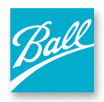Global $91Bn+ Glass & Specialty Synthetic Fiber Market, 2020-2024 - Growing Demand for Optical Fiber Cables and Electronics
Dublin, Feb. 11, 2020 /PRNewswire/ -- The "Glass & Specialty Synthetic Fiber Market by Fiber Type (Glass, Carbon, Aramid, UHMWPE, PPS), Application (Composite, Non-Composite), End-Use Industry, and Region (North America, Europe, APAC,MEA, Latin America) - Global Forecast to 2024" report has been added to ResearchAndMarkets.com's offering.
https://mma.prnewswire.com/media/539438/Research_and_Markets_Logo.jpg
The global glass & speciality synthetic fiber market size is projected to grow from USD 65.9 billion in 2019 to USD 91.4 billion by 2024, at a CAGR of 6.8% between 2019 and 2024.
The glass & speciality synthetic fiber offer exceptional properties, such as stiffness, strength, tenacity, density, and thermal & electrical conductivity, fatigue, and corrosion resistance. Owing to these outstanding properties offered by the glass & speciality synthetic fiber, the demand for glass & speciality synthetic fiber is increasing in various end-use industries.
Carbon fiber is the fastest-growing fiber type in terms of value
Carbon fibers are considered to the significant replacement material for steel, especially in the automotive & transportation and aerospace & defense industries. Most of the auto components are made from steel. Replacing these metals with carbon fibers would help to reduce the weight of most automobiles by at least 60%. This drop in the weight would reduce fuel consumption by 30% and also contribute to the reduction of greenhouse gases and other emissions by around 20%. These fibers also have high demand from wind energy and sporting goods industries.
Composite is the fastest-growing resin type of composites, in terms of value
The use of fibers in composite applications offer properties such as incombustibility, corrosion resistance, high strength, thermal stability, and lightweight. In non-composite applications, the fibers are used as reinforcements without any matrices. Thus, there is a huge demand for glass, carbon, aramid, and UHMWPE fibers based composites in various end-use industries.
Wind energy is the fastest-growing end-use industry of composites, in terms of value
The wind energy is expected to grow at the highest CAGR during the forecast period. The use of glass and carbon fibers in wind turbines provides high tensile strength, helping manufacturers to achieve larger blades and higher energy output. Due to its corrosion resistance properties, composites have helped the wind industry to grow by allowing wind turbines to work in the harshest environments.
APAC is the fastest-growing composites market.
APAC is projected to register the highest CAGR in terms of value in the global glass & speciality synthetic fiber market during the forecast period. APAC dominated the glass & speciality synthetic fiber industry in 2018. The composites manufacturing companies have ample opportunities in the APAC market in comparison to the European and North American counterparts owing to low-cost labor and raw materials. The growth of the glass & speciality synthetic fiber market in this region is supported by the advancement of composite technology solutions and penetration in various end-use industries.
Key Topics Covered
1 Introduction
2 Research Methodology
3 Executive Summary
4 Premium Insights
4.1 Attractive Opportunities in the Glass & Specialty Synthetic Fiber Market
4.2 Glass & Specialty Synthetic Fiber Market, By Fiber Type and Region
4.3 Glass & Specialty Synthetic Fiber Market, By End-use Industry
4.4 Glass & Specialty Synthetic Fiber Market, By Application
4.5 Glass & Specialty Synthetic Fiber Market, By Key Countries
5 Market Overview
5.1 Market Dynamics
5.1.1 Drivers
5.1.1.1 Increasing Demand for Advanced Materials in the Renewable Energy Sector
5.1.1.2 High Demand From Automotive, Aerospace, and Marine Industries
5.1.1.2.1 Automotive Industry
5.1.1.2.2 Aerospace Industry
5.1.1.2.3 Marine Industry
5.1.1.3 Growing Demand for Optical Fiber Cables and Electronics
5.1.2 Restraints
5.1.2.1 High Production Costs
5.1.2.2 Issues Related to Recycling
5.1.2.3 Lack of R&D Investments on Specialty Synthetic Fibers
5.1.3 Opportunities
5.1.3.1 High Demand for Glass Fibers Pipes in Emerging Economies
5.1.3.2 Increasing Demand for Glass Fibers From Construction & Infrastructure Industry in the MEA
5.1.4 Challenges
5.1.4.1 Developing Low-Cost Fibers
5.2 Porter's Five Forces Analysis
6 Macroeconomic Overview and Key Trends
6.1 Introduction
6.2 Trends and Forecast of GDP
6.3 Per Capita GDP vs. Per Capita Glass & Specialty Synthetic Fiber Materials Demand
6.4 Trends in Wind Energy Industry
6.5 Trends in Aerospace Industry
6.6 Trends in the Automotive Industry
6.7 Trends in the Construction Industry
7 Glass & Specialty Synthetic Fiber Market, By Fiber Type
7.1 Introduction
7.2 Glass Fiber
7.3 Specialty Synthetic Fibers
7.3.1 Carbon Fiber
7.3.2 Aramid Fiber
7.3.2.1 Para Aramid Fiber
7.3.2.2 Meta Aramid Fiber
7.3.3 Uhmwpe Fiber
7.3.4 PPS Fiber
7.3.5 Other Fibers
7.3.5.1 PBO Fiber
7.3.5.2 PBI Fiber
7.3.5.3 Vectran
8 Global Glass & Specialty Synthetic Fiber Market, By Application
8.1 Introduction
8.2 Composite
8.3 Non-Composite
9 Glass & Specialty Synthetic Fiber Market, By End-Use Industry
9.1 Introduction
9.2 Aerospace & Defense
9.3 Wind Energy
9.4 Automotive & Transportation
9.5 Construction & Infrastructure
9.6 Marine
9.7 Pipes & Tanks
9.8 Electrical & Electronics
9.9 Protective Clothing
9.10 Others
10 Glass & Specialty Synthetic Market, By Region
10.1 Introduction
10.2 North America
10.3 Europe
10.4 APAC
10.5 Middle East & Africa (MEA)
10.6 Latin America
11 Competitive Landscape
11.1 Introduction
11.2 Competitive Leadership Mapping
11.2.1 Visionary Leaders
11.2.2 Dynamic Differentiators
11.2.3 Emerging Companies
11.2.4 Innovators
11.2.5 Strength of Product Portfolio
11.2.6 Business Strategy Excellence
11.3 Market Ranking
11.4 Competitive Scenario
11.4.1 Agreement
11.4.2 Expansion
11.4.3 New Product/Technology Launch
11.4.4 Partnership
11.4.5 Merger & Acquisition and Collaboration
11.4.6 Joint Venture
12 Company Profiles
12.1 Owens Corning
12.2 Toray Industries, Inc.
12.3 Teijin Limited
12.4 Mitsubishi Chemical Holdings Corporation
12.5 Hexcel Corporation
12.6 SGL Group
12.7 Nippon Electric Glass Co. Ltd.
12.8 Honeywell International Inc.
12.9 DSM
12.10 E. I. Du Pont Nemours & Co.
12.11 Chongqing Polycomp International Corporation
12.12 Jushi Group Co. Ltd.
12.13 Taishan Fiberglass Inc. (CTG)
12.14 Other Players
12.14.1 AGY
12.14.2 Kuraray Co. Ltd.
12.14.3 PBI Performance Products, Inc.
12.14.4 Toyobo Co. Ltd.
12.14.5 Solvay
12.14.6 Huvis
12.14.7 3B Fiberglass
For more information about this report visit https://www.researchandmarkets.com/r/n3am6s
Research and Markets also offers Custom Research services providing focused, comprehensive and tailored research.
Media Contact:
Research and Markets
Laura Wood, Senior Manager
press@researchandmarkets.com
For E.S.T Office Hours Call +1-917-300-0470
For U.S./CAN Toll Free Call +1-800-526-8630
For GMT Office Hours Call +353-1-416-8900
U.S. Fax: 646-607-1907
Fax (outside U.S.): +353-1-481-1716
View original content:http://www.prnewswire.com/news-releases/global-91bn-glass--specialty-synthetic-fiber-market-2020-2024---growing-demand-for-optical-fiber-cables-and-electronics-301002838.html
SOURCE Research and Markets




